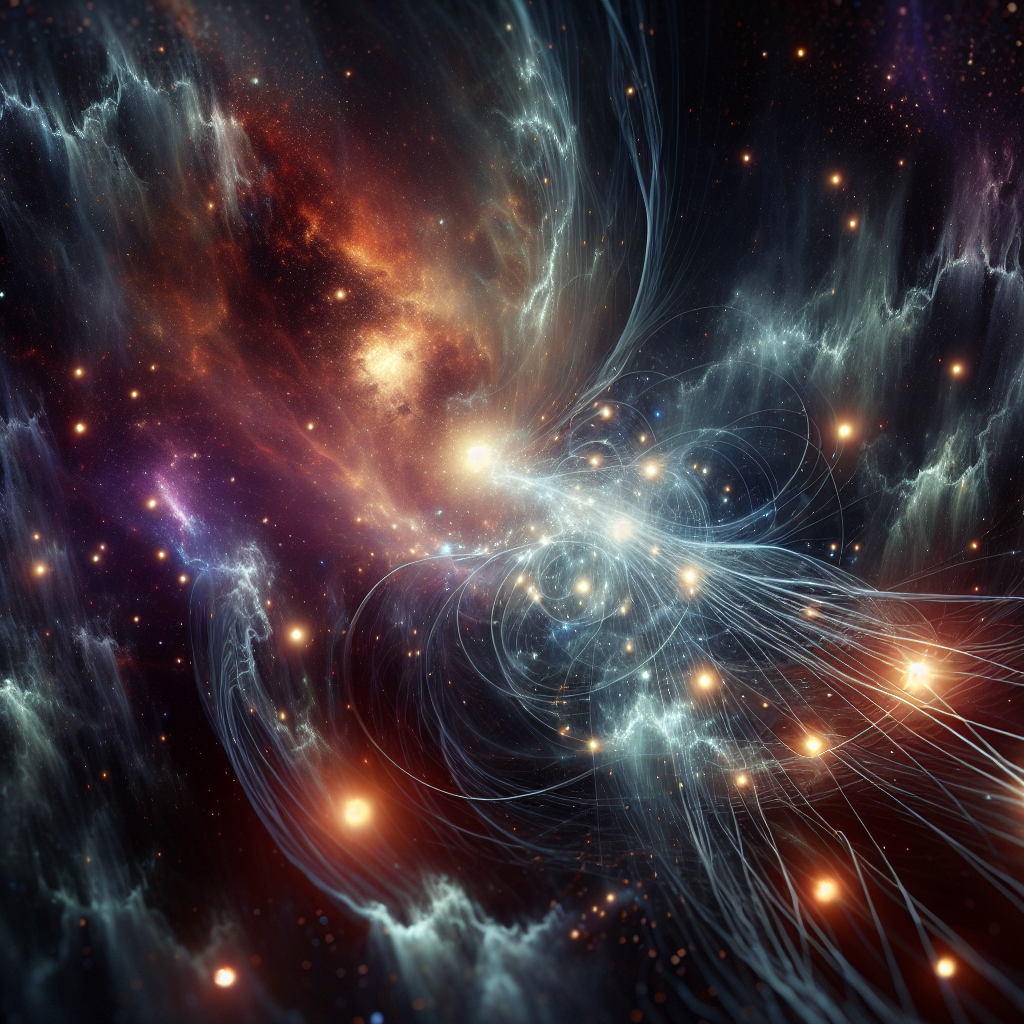In the quest to understand the universe, the enigmatic presence of dark matter remains one of the most tantalizing mysteries. Recent scientific discussions have pivoted towards an unexpected candidate that might shed light on this cosmic conundrum: neutrinos. This article delves into the role of neutrinos and dark matter in contemporary physics, exploring whether these ghostly particles could be the key to unlocking the secrets of dark matter.
The Nature of Neutrinos
Neutrinos are subatomic particles that are notoriously difficult to detect because they rarely interact with matter. Generated in abundance by the sun and other cosmic processes, neutrinos pass through us and the Earth unimpeded. Despite their elusive nature, neutrinos are a fundamental part of the Standard Model of particle physics, which describes the fundamental particles and forces that govern the universe.
Connecting Neutrinos and Dark Matter
The hypothesis that neutrinos and dark matter are interconnected stems from the fact that both are invisible to current detection methods yet exert an undeniable influence on the universe. Dark matter, which makes up about 27% of the universe, doesn’t emit, absorb, or reflect light, but it has a gravitational pull that affects the motion of galaxies and galaxy clusters.
Scientists speculate that neutrinos could either be a component of dark matter or have a new type of interaction with it. This speculation is supported by ongoing experiments and observational studies aiming to detect a ‘sterile neutrino’—a hypothetical type of neutrino that does not interact via any of the known fundamental forces except gravity. If proven to exist, sterile neutrinos could constitute a significant portion of dark matter.
Recent Advances in Neutrino Research
Recent advancements in neutrino detection technology have rekindled interest in their role in the dark matter puzzle. Facilities like the IceCube Neutrino Observatory in Antarctica and the Super-Kamiokande in Japan are at the forefront of these efforts, using sophisticated equipment to capture neutrinos and analyze their properties.
These observatories have made pivotal discoveries, such as the detection of high-energy neutrinos from outer space, which provide valuable clues about cosmic events and the structure of the universe. By studying the mass and behavior of neutrinos, scientists hope to gather insights into whether neutrinos could be a viable candidate for dark matter.
Theoretical Implications
The intersection of neutrinos and dark matter research could lead to new physics beyond the Standard Model. The existence of sterile neutrinos would not only reshape our understanding of the cosmos but also provide the missing pieces in the dark matter puzzle. Moreover, this research could lead to new theories of gravity and expand our knowledge of the early universe.
Challenges and Future Prospects
Despite the promising connections between neutrinos and dark matter, significant challenges remain. Neutrinos are incredibly difficult to detect, and isolating the effects of hypothetical sterile neutrinos is even more challenging. Furthermore, linking neutrinos directly to dark matter requires new theoretical frameworks and experimental evidence that conclusively demonstrates their interaction.
As technology and theoretical models evolve, the next generation of neutrino observatories and experiments designed to detect dark matter may provide the answers scientists are seeking. Collaborative international efforts and advancements in particle physics promise to push the boundaries of what we know about neutrinos and their potential link to dark matter.
In conclusion, while the connection between neutrinos and dark matter is still theoretical, ongoing research and technological advancements offer hope that we may soon uncover the nature of the universe’s most elusive matter. The possibility that neutrinos could be the key to unlocking dark matter not only enriches our understanding of the cosmos but also highlights the continual need for innovation in scientific research.


